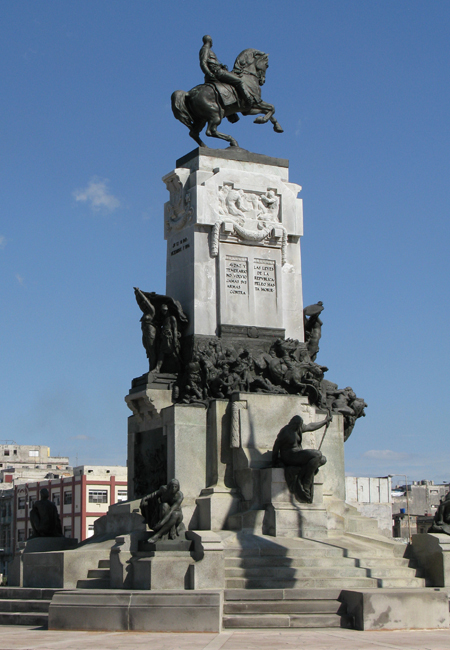Source: Photograph (2010) by WTL© on site in Havana.
Comments: The equestrian statue atop his monument, which sits next to the Malecón (to the left or north of the monument) is in honor of General Antonio Maceo y Grajales (1845-1896). Off-frame to the right is the Casa de las Américas. General Maceo, who was a Mason, was second-in-command of the Cuban Army of Independence in the Ten Years' War (1868-1878), and he was one of Latin America's great guerrilla leaders in the 19th century. When the Cuban rebels fighting for Cuban independence surrendered in the Treaty of Zanjón in 1878, one of the revolutionaries refused to surrender was Gen. Maceo. He was exiled, but those who continued to resist the Spanish colonial army waged the guerra chica (little war), at the end of which in 1886 slavery was finally abolished officially in Cuba, which was the last place in Latin America to eliminate slavery. At this juncture, trade with the United States began to increase dramatically. He was killed in action by the Spanish army in the last wear of independence.
Humanities topics: (A) This monumental statue is a very large humanities object. What does it mean to say that it is a complex humanities object? (B) Like all cultures in Latin America, the plazas in Havana feature major and minor statues. Compare and contrast this equestrian statues with similar statues in Saint Augustine, Florida (=> San Agustín, #4), Lima (=> Lima #22), Mexico City (=> Mexico City #XX), Montevideo (=> Montevideo #4), and Buenos Aires (=> Buenos Aires #13).

